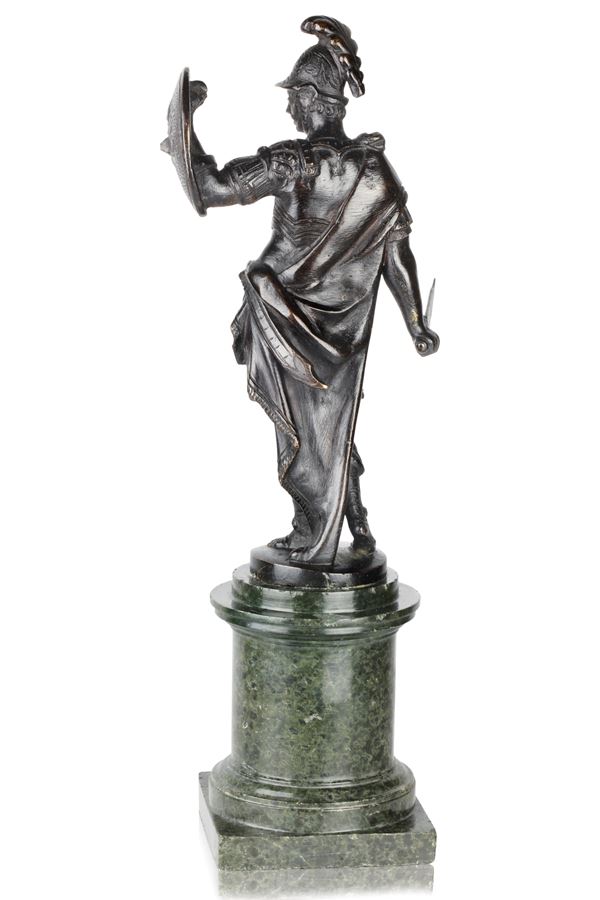Tiziano Aspetti (Padova, 1559 - Pisa, 1606)Workshop of
Mars, 16th-17th century
This model of Mars is a typical product of Venetian Renaissance foundries. Often used as a monumental firedog, paired with Minerva, or as a studio decoration, it is universally attributed to the foundry of Tiziano Aspetti or that of Girolamo Campagna (Verona, 1552-Venice, 1625).
Aspetti did not leave an actual workshop to perpetuate his models. 19th-century catalogues by Bode and Planiscig attributed all statuettes to the master while the current scholarship attributes them to anonymous coeval foundries that imitated the subject.
One of the few autograph sculptures of Mars is hold in the Frick Collection, Washington (Debra Pinctus, 2001).
Our statuette is among the most successful proofs of the subject and it is comparable to that in the Bottacin Museum, Padua (Banzato, Pellegrini, 1989, cat. no. 171-175) and to one in the Hermitage (Androsov, 2008, cat.no.183). See also parallels in the Museo di Arte Medievale, Bologna and Palazzo di Venezia, Rome.
For the Mars of the Bottacin Museum in Padua see: Banzato, Pellegrini, Bronzi e placchette dei Musei civici di Padova, 1989, cat. n. 171-175.
For the Mars of the Hermitage see: Androsov, 2008, cat.n.183.
Mark Gregory D’Apuzzo, La collezione dei bronzi del Museo Civico Medievale di Bologna - Libro Co, San Casciano Val di Pesa ( Firenze), pp.216-220.
Sergej Androsov, Museo Statale dell’Ermitage, La scultura Italiana dal XIV al XVI - Skira Editore, Milano, 2008, pp. 360-361.
Pietro Cannata, Museo Nazionale del Palazzo di Venezia, Sculture in Bronzo, Gangemi Editore spa, Roma 2011, pp. 11-112.
AAVV, a cura di Davide Banzato, Donatello e il suo Tempo - Skira editore, Milano 2001, pp. 360-361.
AAVV, Small bronzes in the Renaissance - Edited by Debra Pinctus, National Gallery of Art, Washington, Yale University Press, London , 2001, pp. 143-157.






